|
by Rabbi Malkah Binah Klein Hello! Hello, there! Yes, you! I’m calling to you! Slow down See me Let me reveal my face to you Let me delight you and delight in you Join me in the New World, the world beyond worlds that opens through our face to face encounter Rabbi Malkah Binah Klein is founder of Merkava, which supports healing and transformation through creative ritual and spiritual practice.
0 Comments
by Rabbi Joshua Breindel In our journey through the month of Elul, the ancient Rabbis call to us across the years. They encourage us to engage in teshuvah – to turn from destructive behaviors and mend our ways. This practice has a special urgency today, following one of the hottest summers on record. We know that humanity has great power over our environment and the climate. The Rabbis shared this same perspective. While this midrash (Rabbinic story) was written 1,500 years ago, it’s just as relevant in our own day. When the Holy One created Adam, God took him before all the trees of the Garden of Eden, saying to him, “See how good and how fine are my works! Everything that I have made, I created for you. Reflect upon this and do not spoil or lay waste to my world. If you spoil it, there will be none to repair it after you.” (Kohelet Rabbah 7:13) The midrash concludes without a reaction from Adam. This invites us to ask how Adam might have replied to God’s words. And, by extension, we’re challenged to form our own response to this powerful truth.
Dare we imagine that Adam promised to care for the earth, committing himself and his descendants to tend to it with willing hands, open ears and loving heart? No matter Adam’s response, we cannot afford to imagine any other answer to God’s warning for ourselves. We do not have the luxury of ignoring this charge with the assumption that the next generation will clean up after us. This month of Elul is a critical moment for us to consider how the call to teshuvah challenges us to engage meaningfully in the face of climate change. While the reality of human agency in this issue is beyond scientific question, we are blessed by having practical and constructive ways to respond (see the resources for some helpful ideas). The Rabbis tell us that we must not spoil the earth. Our scientists tell us that our actions are leading to ruin. The holy path of teshuvah, of honestly assessing the impacts of our actions, is the only path that will lead us to blessing. We must recommit ourselves to being good stewards of the earth, lest there be none to repair our world after us. As the High Holidays draw close, let’s share this story of God and Adam far and wide. Let’s be guided by its wisdom to craft a world in which we – and future generations – will long endure, embracing the wonders of Creation with awe and in joy! Rabbi Josh Breindel has served at Congregational Beth El (Sudbury) since 2018. Previously, he served nine years as rabbi of Temple Anshe Amunim (TAA) in Pittsfield, Mass. He earned a B.A. in philosophy with a minor in classics and a concentration in legal studies from Brandeis University. He was ordained at Hebrew College, where he also received master’s degrees in Jewish studies and Jewish education. He and his family love to walk the cool green hills of Boston's MetroWest. by Chaplain Rabbi Dr Leslie Schotz Rabbi Nachman of Breslov says the world is a very narrow bridge. The main thing is not to be afraid. We are created from the earth and to the earth we will return. The heavens are water above. The lakes and oceans hold the mystery and life force below. We walk a path of hopefulness even as we reflect about the future of all life on earth. Our days are numbered. The Psalms remind us to treasure each day and open our hearts to its wisdom. The path we take can lead us to transformation. Like the swan appearing so graceful, yet vigorously paddling underneath. We too struggle within to make teshuvah, an inner turning. With tefillah we pray. And tzedekah justly empowers others to be nurtured and supported by community resources. As we remember each of us is created in G!d’s image: B’tzelem Elokim. Chaplain Rabbi Dr Leslie Schotz is a Board Certified Chaplain who works as a chaplain in a psychiatric hospital and also at a nursing home as a hospice chaplain. Rabbi Schotz is the author of two books. One is entitled Spiritual Direction for Jewish Children. The other is Congregational Guide to Jewish Meditation.
by Anonymous In Genesis, G-d calls out to the Human, Ayeka, Where are you? However, where do we find Earth’s call for Humanity? How do we reconnect with our first potential soulmate, ADAM to ADAMAH? Amidst the stress, heartbreak, and numbness of daily life, how do we connect our little body to the body which is our Home?
One of my spiritual practices in this daily chaos has been a dance practice called 5 Rhythms, except I don’t go there to dance. I go there because amidst the music and the evening darkness, is one of the few places where I can simply let my body “tell the truth” and move how it wants to move. Sometimes, I do dance upright. More often than not, I sit or lay down, and let my body move itself. I turn towards the somatic intensity that is always rushing through me like electricity, with nowhere to go. On the eve before the 17th of Tammuz, I arrived late, exhausted, numb and overwhelmed. I tried to dance, making my way across the giant open room, trying to find the beat of the music inside my heartbeat. On the other side of the world from everything and everyone I know and love, I collapsed on the floor, finding comfort in the clear boundary that is its surface. I let the waves of my body’s energy take me, my body convulsing as usual, like a stray wave which has forgotten its part of the ocean. And then something inside of me did remember and I cried out to Mama Earth, "Please hold me, I do not know where I am going and I can walk no longer." I begged something inside me, bigger than me, "Please wake up!" My body convulsed in even bigger waves, then my legs began to spread out, the soles of my feet reaching out with my toes curled inside. And I felt my (cis-male) body, as if in waves of orgasm giving birth. Or, attempting to give birth. I let out a deep guttural moan, drowned out by the music. And I remembered myself as a tiny wrinkle of an ADAM/Earthling, held inside the AH of ADAMAH/Earth. I cried and I screamed, some more. And the waves gushed forth from the deep. You might say, G-dess opened up the flood waters. Dozens of people danced around me in the darkness, each dancing their own dance. Then I rose up, perhaps as if lifting this little newborn me from the waters and holding him high. Or perhaps, as if lifting water and pouring it over myself. This Moshe, pulling another little Moshe from the waters, again, over and over again. I nuzzled him back into, forward into, life. I poured water over myself, over us, over, and over again. Dozens of people danced around me in the darkness, each dancing their own dance. I was surrounded by people but they were dancing their own stories in that evening’s darkness. The only real witnesses were, me, Mama Earth, and my Self. And now you. by Rabbi Michael Birnholz In the 1990s I was a counselor at URJ Camp Coleman. Now in a later part of my life, ordained as a Rabbi, with a family of my own, I have been honored to serve as faculty there. Camp has always been a place of powerful experience for me. This year, when I was asked to offer an elective, I realized I could incorporate a favorite activity, wild fruit foraging, into camp as an illustration of a valuable spiritual dynamic. While I certainly get a chance to forage fruits from my local environment, picking berries from bushes scattered around Camp, located in northern Georgia, is always fun. As part of this activity, even as we looked to find these natural treats, I offered to teach a bit about general and Jewish rules for foraging. One of the crucial imperatives of foraging is to be aware of what you leave in the environment. Even as one takes from the natural world, the goal is to also preserve and protect that place for the future. While we ate blueberries at Camp Coleman, we also planted a Paw Paw Tree. With one hand we ate, were satisfied and praised the Holy One of Blessing. With the other, we gave energy to create an opportunity for future generations to get special sweetness and sustenance. Yet, this was not just an exercise about natural sustainability. There is also the metaphorical foraging as campers, staff, faculty are constantly “taking” experiences from Camp and leaving impressions behind. We are always enjoying the “fruits” of our ancestors (Zechut Avot), planting seeds of knowledge and experience, as well as maintaining traditions, culture, and wisdom for those who follow. So much of Judaism, of our sense of Lador Vador/Generation to Generation, follows the rules of foraging, what we take and what we leave. For example, at Camp Coleman, while we ate and planted, we talked about our favorite experiences and things we learned at Camp and we looked for examples of what past generations left for us, discussing what we leave behind for those who follow. After my experiences at Camp and now, as this year comes to an end and a new one arrives, I find myself very aware that we are always taking and giving, foraging in a sense. As I challenged those campers and myself this summer, I have to wonder, can we do forage, physically and metaphorically, and work to ensure that we infuse these actions with Kavanah/intention? Do we feel the weight/Kavod and show appreciation for what we take, and, in turn, invest energy and thought and care into what we leave behind…? Let us in this new year, even just once in a while, show care and appreciation for what we are taking and give energy and attention to what we are leaving behind. Rabbi Michael Birnholz arrived at Temple Beth Shalom in Vero Beach in 2002 following his ordination from Hebrew Union College-Jewish Institute of Religion. Over the 20 years that Rabbi Birnholz has been in Indian River County, he and his family have had a chance to grow in body, mind and spirit right along with Temple Beth Shalom. Rabbi Birnholz enthusiastically shares his ruach and koach -spirit and strength - with the many diverse generations and facets of the Jewish community. From the biblical garden to tot Shabbat, from Men's club breakfast to adult learning while making challah, he is proud to be part of vibrant and meaningful life of his congregation. Rabbi Birnholz has also enjoyed his wide variety of community opportunities to teach and preach Jewish values and wisdom. His hope is to build Temple Beth Shalom into a House of wholeness, harmony and peace and see these efforts spread caring, compassion and justice to the whole Treasure Coast and beyond.
by Asher Hillel Burstein Blood-red light on a golden chain Hangs low and onto me, overflows Like a waterfall, I drown in its million Lambent drops formed at the other end Of the Earth, I am but a speckle but The fiery stone holds the world entire in Her field where God, though too immense For the heavens may abide with comfort In her breast where my eyes are led as Iron to a magnet, moths to a candle That consumes me and drains the life From my veins, a myriad of sprites Take flight and leave me wilted. I die in her flames. Asher Hillel Burstein is a teacher, poet, singer-songwriter, and cantor. Besides his education in various yeshivot, a bachelor's degree in Hebrew, an MFA in Fiction Writing, and a master's in Jewish Studies, he is working on a third master's degree in Secondary English Education while finishing up his doctorate in Creative Writing.
by Rebecca Heisler For many, Tisha b’Av is an arrow pointing towards the start of the cycle of teshuvah, that leads us through Elul and into Tishrei. The themes, questions, and prayers of this holiday can lead us to find meaning and connection in the season of returning. This year on Tisha b’Av, as I sat around a fire, I found myself praying for the children. It began with “I’m sorry.” And it continued, “I’m sorry for the world you are inheriting, and even more for the earth you are inheriting.” I’m sorry you have to ask “is there lead in this soil?“ when a perfect heirloom tomato sits in front of them. I’m sorry that the air is toxic on these hot afternoons, making your eyes burn in your lungs ache. I’m sorry for all the days you can’t swim this summer, because the waters are filled with the overflow of sewers. The next day, in the haze of a difficult fast, I walked through the forest, asking questions of the trees. On the path before me, a bird burst out of the leaves. I scared them, and they scared me. When I approached, I saw that they were unwell, maybe hurt or maybe sick. I sat with that bird as their chest heaved up and down, the look of pleading and panic in their eyes. I thought to myself, I can’t stop their suffering. I can only sit here with them and accompany them. I can breathe with them and sing to them. So then we sat. I started to sing, they continued to breathe, we both closed our eyes. Soon after, I returned from my walk in the forest with a clear call to witness suffering. To come close to suffering. To sit with suffering. If I walk around with my head in the clouds, shouting to the heavens about climate chaos, displacement of humans and our kin, the end of species, the degradation of ecosystems, the theft of land and the pollution of waterways, I miss out on my chance to love. Love both as a feeling and an action. Climate action for me most often takes the shape of teaching children to love the world, to deepen their relationship with the earth they will inevitably have to fight for. I spent much of this summer teaching children to notice. To step outside of the story of the world, and into an experience of it— less mind, more body, placing their senses and questions at the center of their awareness. And that’s the call that I carry forth: to remember to smell, touch, taste, hear, and see the world around us, to grieve with it as it changes and to remember joy and pleasure I have a place in our relationship. To not lose connection, even as so much is lost. The call is to teach our children to befriend the plants and animals, to notice when they’re hurting and to not look away from suffering, to witness life and death with compassion, to witness change and loss with presence, and to look to the east, and remember that even amongst all this, the sun will rise again tomorrow. Rebecca Heisler is a student at The Rabbinical School of Hebrew College in Newton, MA and the Director of Y’ladim BaTeva at Ma’yan Tikvah. She has worked at Wilderness Torah as a B'naiture Mentor and Youth Programs Manager, a Youth Mentor, Backpacking Trip Leader & JOFEE Fellow. She has taught Hebrew school, worked at Urban Adama in Berkeley, CA, and been a community organizer for Jews on Ohlone Land in Berkeley. She is a place-based Jewish educator and brings gentleness, compassion, liberatory frameworks, creative curriculum, and a laugh that fills a room. Becca is steadfast and wholehearted in her commitment to care, joy, curiosity, storytelling, and song.
by Louise Quigley (Written in a year when Rosh Hashanah, the Autumn equinox, and the first killing frost in the garden all came together) Now frost-blighted fuchsias start to rot, crumpled tomatoes sag against their poles, and sap's ebb spreads across the leaves like gold; dark outlasts day again, and it gets cold. And this is the world's birthday, this the day we call the head and start of another year. For now all nature turns to its decay: dun yard trash molders into fertile loam; Earth turns towards winter's still, which turns towards spring; We turn again on our twisting journey home. Louise Quigley a gardener, writer, family person and activist.
by Rabbi David Seidenberg Rebbe Nachman of Breslov taught: The divine name "YOU" (in Hebrew "Atah") is propitious over the sea to calm the waves. This is the inner meaning of the verse "YOU (Atah) rule over the magnificence/swelling (gay-ut) of the sea; in lifting its waves, YOU (Atah) will make them still." (Likutei Moharan 1:256 on Psalm 89:10) Waves of feeling can stir us up and arouse our passion, and they can arouse confusion. Amid turbulence can we see magnificence? Is there splendor to match the chaos and confusion of these times, amid political strife, division, and turbulent torrents from a disrupted climate? How can we make ourselves more present, more centered, and able to take on the challenges brought on by wild hurricanes and mega-fires, by glaciers melting and seas rising, by the human destruction of the Earth's ecosystems? In the midst of turbulence, one can take a moment to look toward the divine "You" and say "You are" -- that is, one can both recognize the divine and also address it. In the moment one says "You are", one also says "I am". There is a center-point within that addresses the divine. Knowing that point is the beginning of moving calmly forward. During this time leading up to Rosh Hashanah, however, the direction in which we seek to move forward is the direction of t'shuvah, which means returning. There is a tension there -- how does turning back help us move forward? The obvious answer is that if we are moving in the wrong direction we must turn backwards to move in the right direction. But the less obvious answer is that returning means calming the waves and returning to stillness. May we harness all the emotions we feel about the planet so that we can bring all our energy to bear as we enter upon the renewal of Creation in the New Year. Rabbi David Seidenberg is the creator of neohasid.org and the author of Kabbalah and Ecology: God's Image in the More-Than-Human World. He has ordination from JTS and Reb Zalman, and is an avid dancer and composer.
by Rabbi Robin Damsky I live a life of privilege. From being a single mother, I have a student loan debt for myself and my daughter that would take 20 debt cancellations to settle. I am approaching Medicare age and my hair thins by the hour. But I am healthier than most. I dance. I understand and prepare healthy food. I teach people about the earth. As a Jew I am in the minority, but I have a voice, and a platform through which to share and amplify that voice. I am newly married to the love of my life. And I live atop a mountain that has views from here to forever. Just over 2.25 acres, our plan is to turn this property into a food forest with a meditation labyrinth of native pollinators. So much richness. And with all this privilege, we have a worry about water. Our property has a well that is slow producing. We now await a third opinion, as in recent months we’ve been told the well is healthy; and conversely, told not to grow food here because the well won’t produce enough water. A microcosm of water concerns we see all over the globe. Me not growing food is not an option. Not just because it’s a way to care for the earth. Not just because it’s a way to provide healthy food for family, neighbors, community. Not just because it’s a way to facilitate others in enhancing their relationship with the land. But because this is my teshuvah. It is my way to express my gratitude to the Creator for my life and my sustenance, and it is a way – albeit very small – to mitigate climate change even a tad. Composting, building soil, using permaculture and other regenerative practices to grow ecosystems – this is my return to Source, return to my soil soul. How do you experience your soil soul? Are you fueled to grow things? Are you impelled to political work on climate change? Are you teaching people about the ocean, the air? Going hybrid or electric, biking or using public transportation? How do you feed the soil-being that you are – the adam from adamah: the human built from earth? Nourishing your soil self is the teshuvah that the future of the Earth’s ability to sustain us is dependent upon. I recommend slowing down. When I do, I breathe better. Try it. When we’re breathing, our interconnectedness with All That Is pervades our cells, our knowingness. We remember. We remember that we are one with the soil. In that remembering, the right teshuvah for our essence manifests itself. And we blossom. We’ll grow food on this mountain. We’re looking into cisterns. Swales. Ponds. Any way we can catch water, store water, send water back into the soil to nourish life. We’ll keep feeding the earth and feeding each other. Returning to the earth over and again for our guidance. Remembering that every breath is a privilege. Rabbi Robin Damsky, identified by Kenissa (kenissa.org), as an innovator redefining Jewish life, leads Limitless Judaism, a project of learning, movement, meditation, melody, art, tilling and tending the earth, that draws the lines of connection between our physical bodies, our spiritual expression and Gaia, our earth-cosmos. She serves as Rabbi-In-Residence at Judea Reform Congregation; and leads meditations regularly for the Institute of Jewish Spirituality. Robin lives in Efland, NC. Find her on Instagram or Facebook: @limitlessjudaism, or https://hy.page/limitlessjudaism.
|

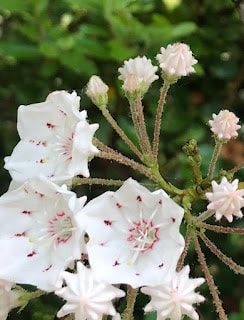
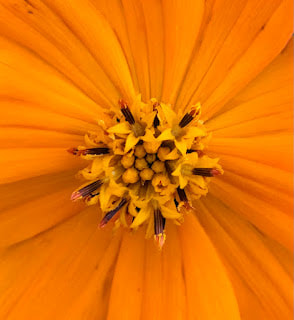
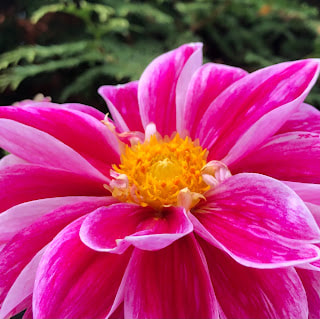
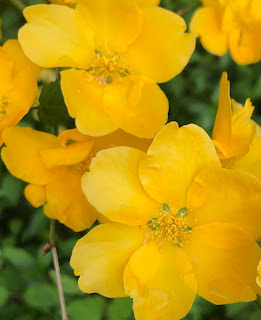
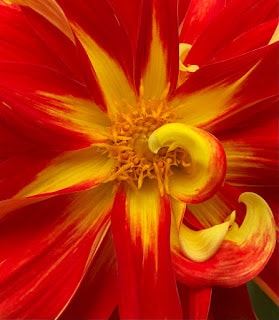
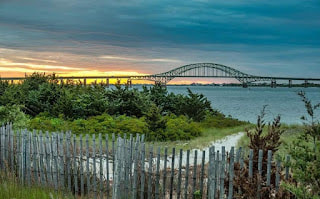
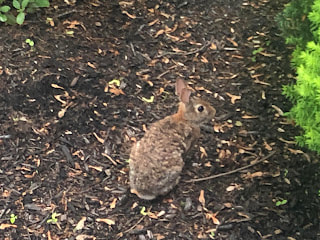
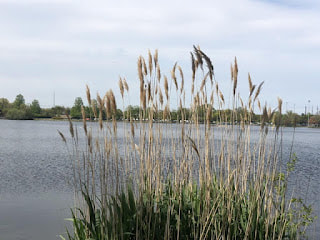
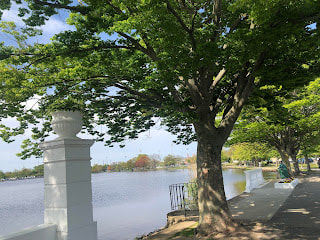

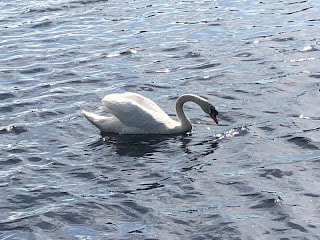

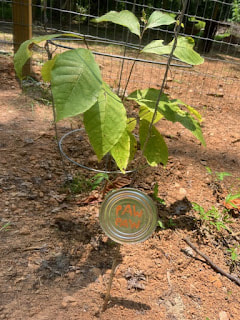
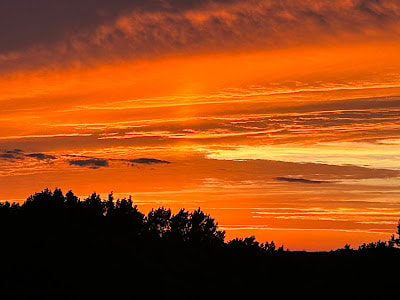
 RSS Feed
RSS Feed